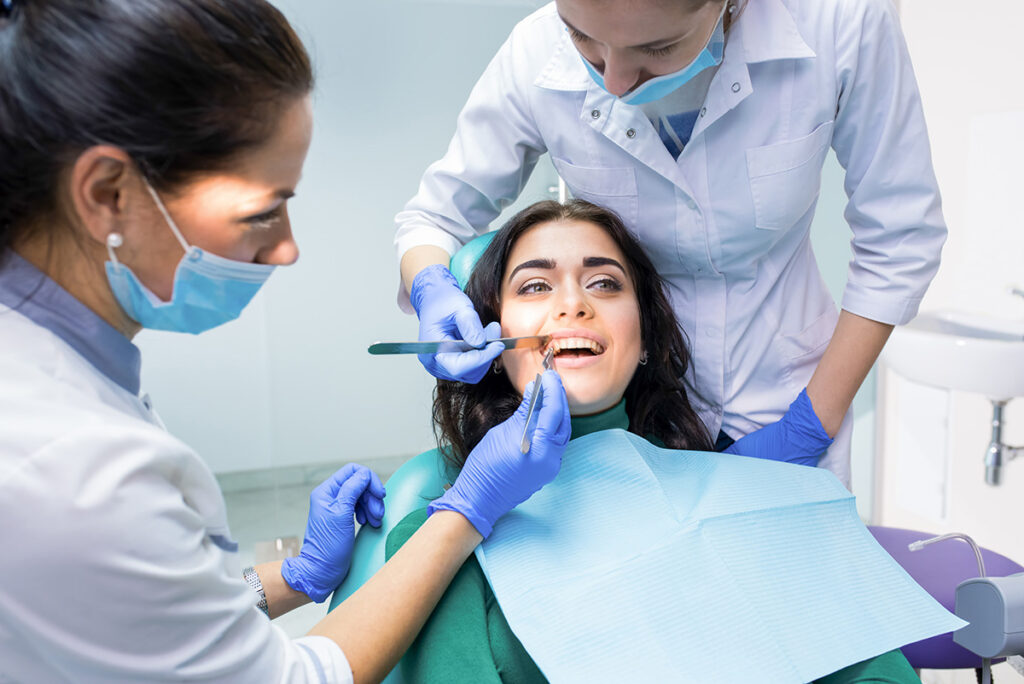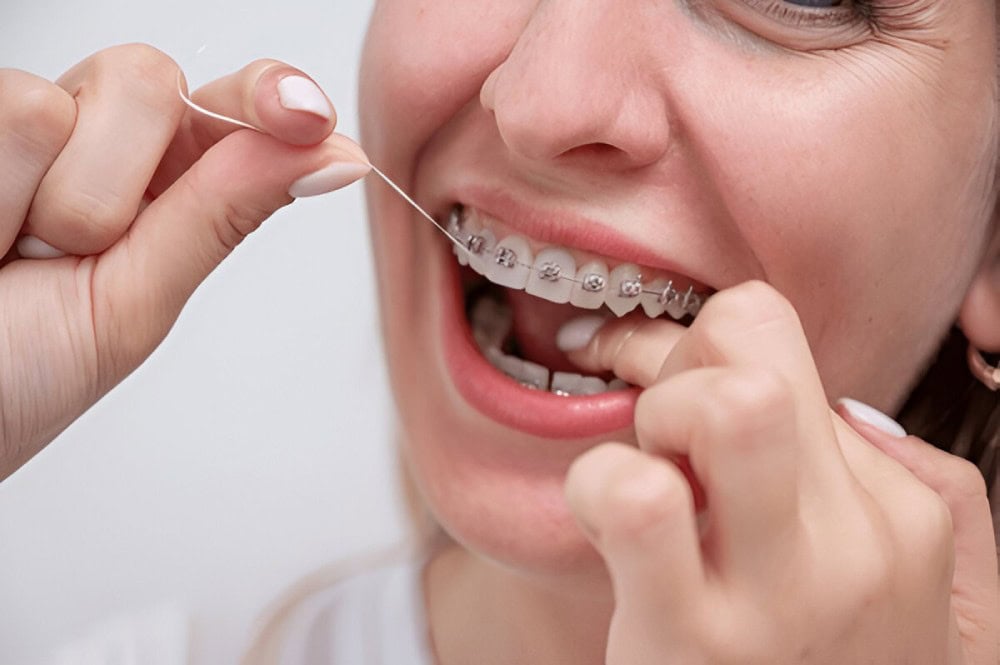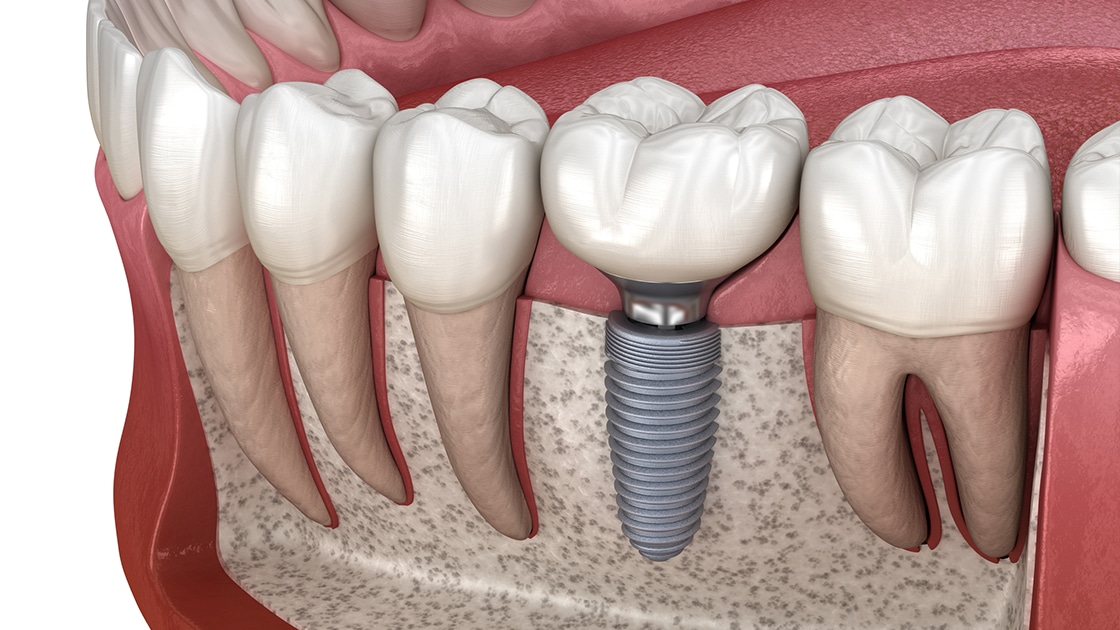The Right Way to Brush and Floss: Simple Steps for a Healthier Smile
May 26, 2025

Healthy teeth and gums start with the right technique. Brushing and flossing may seem routine, but how you do them makes all the difference. When done properly, these daily habits protect your smile from tooth decay, gum disease, and bad breath, helping you maintain a clean, confident look.
This step-by-step guide will show you how to brush and floss the right way. Whether you're refreshing your technique or learning for the first time, mastering these basics is a key part of any long-term oral health plan.
What You Need to Know
- Brush your teeth twice a day and floss once daily to keep plaque and bacteria at bay.
- Use a 45-degree angle while brushing and choose a soft-bristled toothbrush for effective, gentle cleaning.
- Floss using a C-shape technique to clean between teeth and under the gumline thoroughly.
- Regular visits to your dentist ensure your oral health stays on track and help catch any issues early.
These small daily steps lead to big results: a brighter, healthier smile that lasts.
Why Proper Brushing and Flossing Matter for Healthy Gums
Keeping your gums healthy starts with the basics—brushing and flossing every day. These simple habits are your best defense against plaque, the sticky film of bacteria that builds up on your teeth and gums. If not removed, plaque can cause more than just cavities. It’s the leading cause of gum disease, which can lead to discomfort, infection, and even tooth loss if left untreated.
Brushing with fluoride toothpaste helps clear away plaque while strengthening your enamel. It also freshens your breath by targeting the bacteria that cause odor. But even the best toothbrush can’t reach every area, especially between your teeth. That’s where flossing comes in.
Flossing cleans the tight spaces your brush can’t reach. It’s essential for removing trapped food particles and preventing inflammation that can lead to gum disease. For added protection, tools like interdental brushes or water flossers can help keep those spaces clean and your gums healthy.
By brushing twice a day and flossing once daily, you can significantly lower your risk of dental problems. A toothbrush alone can’t clean every nook and cranny, so flossing fills in the gaps. Together, these habits support a cleaner mouth and a healthier, brighter smile.
How to Brush Your Teeth the Right Way
Brushing isn’t just about going through the motions. To get the most out of your daily routine, technique matters. Brushing the right way ensures plaque is removed effectively while protecting your gums from damage.
The American Dental Association recommends brushing twice a day for at least two minutes each time. Focus on covering every surface—outer, inner, and chewing—while being gentle to avoid irritation.
Step-by-Step Brushing Tips
- Choose the Right Toothbrush: A soft-bristled brush is ideal for cleaning teeth effectively without harming your gums.
- Use a 45-Degree Angle: Tilt your brush towards the gumline and use small, circular motions to remove plaque.
- Brush All Surfaces: Clean the outer, inner, and chewing surfaces of every tooth.
Don’t Rush: Spend at least two minutes brushing, making sure you don’t miss any areas. - Brush Your Tongue: This helps remove bacteria and freshens your breath.
With the right tools and techniques, brushing becomes more than a habit—it’s a vital part of protecting your smile and keeping your gums in great shape.
Choosing the Right Toothbrush and Toothpaste
A good brushing routine starts with the right tools. Whether you prefer a manual or electric toothbrush, both can be effective at removing plaque when used correctly. The most important factor is comfort and consistency—but dentists generally recommend soft-bristled brushes. They’re gentle on your gums while still doing a great job of cleaning your teeth.
When selecting a toothbrush, check for the American Dental Association (ADA) Seal of Acceptance. This seal means the product has been tested and proven to be both safe and effective. Choosing a toothbrush with this seal gives you peace of mind that you're using a tool that supports your oral health.
As for toothpaste, look for one that contains fluoride. Fluoride helps strengthen enamel, protect against decay, and keep your teeth healthy with every brush.
How to Brush Properly
Good technique is just as important as regular brushing. Here’s how to make sure you’re cleaning your teeth the right way:
- Angle Matters: Hold your toothbrush at a 45-degree angle to your gums. This helps target the gumline, where plaque loves to hide.
- Use Short, Gentle Strokes: Brush the outer and inner surfaces of your teeth using short, circular motions. For the chewing surfaces, a gentle back-and-forth motion works best.
- Front Teeth Need Attention Too: When brushing the inside of your front teeth, tilt your brush vertically and use several up-and-down strokes.
- Don’t Forget the Gumline: Brushing along the edge of your gums is key to removing plaque and preventing inflammation.
- Pressure Makes a Difference: Brushing too hard can actually harm your gums. Use a light touch and let the bristles do the work.
Brushing effectively means more than just going through the motions. With the right toothbrush, toothpaste, and technique, you’re setting the foundation for strong, healthy teeth and gums.
How to Floss Your Teeth the Right Way
Flossing isn’t just an extra step—it’s a vital part of keeping your teeth and gums healthy. While brushing removes plaque from the surfaces of your teeth, flossing takes care of the tight spaces between them and just below the gumline where your toothbrush can’t reach. Neglecting these areas allows plaque to harden into tartar, which can lead to cavities, gum disease, and other oral health concerns.
For the best results, floss once a day, preferably at night before bed. This ensures your mouth stays clean while you sleep and helps reduce plaque buildup overnight. Whether you're using traditional floss, dental tape, or a water flosser, the key is consistency and proper technique.
Choosing the Right Floss for You
There are several types of floss available, each suited to different needs:
- Traditional Nylon Floss: Available in waxed and unwaxed versions, nylon floss is effective for cleaning between tightly spaced teeth.
- Dental Tape: Wider and flatter than regular floss, dental tape is a great option for those with more space between their teeth or sensitive gums.
- Water Flossers: These devices use a gentle stream of water to remove plaque and food particles, making them ideal for people with braces, dental implants, or bridges.
- Floss Picks for Kids: Fun colors and flavors can help children get into the habit of flossing early on.
Whichever type you choose, look for the ADA Seal of Acceptance to ensure you’re using a trusted and effective product.
Step-by-Step Flossing Tips
Flossing might seem simple, but doing it the right way makes all the difference. Here’s how:
- Start with About 18 Inches of Floss: Wrap most of it around your middle fingers, leaving a few inches to guide with your thumbs and index fingers.
- Gently Slide the Floss Between Your Teeth: Use a back-and-forth motion, and avoid forcing or snapping it into place.
- Form a C-Shape: Curve the floss around each tooth and gently slide it under the gumline. Move it up and down to clean both sides thoroughly.
- Use a Clean Section for Each Tooth: This helps prevent spreading plaque and bacteria from one area to another.
Flossing too aggressively can damage your gums, while being too gentle might not remove enough plaque. The right balance helps keep your gums healthy and strong.
With daily flossing and proper technique, you’re doing more than just cleaning your teeth—you’re taking an important step toward lifelong oral health. Need help finding the right floss or perfecting your technique? Your dental team is always here to help.
Extra Tools for a Cleaner Smile: Interdental Cleaning Options
While traditional dental floss is a powerful tool in your daily routine, some areas may benefit from a little extra help. Interdental cleaning tools are designed to target those hard-to-reach spots between teeth and around dental work, giving your mouth a more thorough clean.
- Interdental Brushes: These small, cone-shaped brushes are perfect for cleaning wider gaps between teeth or around braces and bridges. They’re easy to use and gentle on your gums.
- Water Flossers: Also known as oral irrigators, these devices use a targeted stream of water to flush out food particles and plaque from between your teeth and along the gumline. They’re especially helpful for people with braces or dental implants, and can be a great alternative for those who find traditional flossing difficult.
- Dental Picks: Disposable and easy to use, dental picks help dislodge food and plaque in tight spaces. Some versions are designed with rubber tips or soft bristles for a more comfortable experience.
Adding these tools to your daily brushing and flossing routine can give your oral hygiene an extra boost. Together, they help reduce plaque, improve gum health, and leave your mouth feeling fresh and clean.
Helping Kids Learn to Brush and Floss
Getting kids into the habit of brushing and flossing can take some creativity, but starting early sets the stage for a lifetime of healthy smiles. Children should begin flossing as soon as two teeth touch. Around age 10 or 11, many kids are ready to handle flossing on their own.
To make it more enjoyable:
- Use Music or Songs: Flossing songs or brushing tunes can help children learn the steps while keeping the mood light and fun.
- Offer Small Rewards: Stickers, charts, or small treats can motivate kids to stick with their routine.
- Try Kid-Friendly Tools: Colorful, flavored floss picks and character-themed toothbrushes can make oral care feel less like a chore and more like an adventure.
- Make It a Game: Turn brushing and flossing into a mission to “defeat the plaque monsters” and your child might look forward to doing it every day.
When brushing and flossing become fun, kids are more likely to stay consistent. With a little patience and encouragement, you can help your child develop healthy habits that last a lifetime.
Keeping Your Smile Healthy with Regular Dental Visits
Daily brushing and flossing lay the foundation for great oral health, but regular dental visits are what keep that foundation strong. These checkups are more than just routine cleanings—they’re your opportunity to get personalized advice and care from professionals who understand your unique needs.
At each visit, your dentist and hygienist work together to monitor your oral health, remove plaque and tartar buildup, and catch any potential issues before they become serious. These appointments often include screenings for oral cancer, which can be life-saving when detected early.
Staying consistent with your dental visits helps maintain a bright, healthy smile and supports your overall well-being. Think of them as part of your long-term health plan, just like your annual physical.
A Healthy Mouth Starts with Daily Habits
Good oral health is all about consistency. When you brush and floss properly every day, choose the right tools, and make regular dental checkups a priority, you’re setting yourself up for a lifetime of healthy smiles. Teaching children these habits early, and making oral care enjoyable, lays the groundwork for their future too.
With just a few minutes a day and a visit to your dentist every six months, you can protect your smile and enjoy the confidence that comes with it.
Frequently Asked Questions
How often should I brush and floss my teeth?
Brush twice a day and floss once daily. Flossing at night is especially helpful to keep your mouth clean while you sleep.
What type of toothbrush should I use?
A soft-bristle toothbrush is best for gentle, effective cleaning. Whether you prefer manual or electric, be sure it has the ADA Seal of Acceptance.
How do I teach my child to floss properly?
Start early and make it fun. Use songs, games, and rewards to turn flossing into a daily habit your child looks forward to.
What additional tools can help with cleaning between teeth?
Interdental brushes, water flossers, and dental picks are great options to clean those hard-to-reach spaces that floss might miss.
Why are regular dental visits important?
They help catch small problems before they turn into big ones, provide personalized care, and include important screenings like those for oral cancer.
Related Articles




